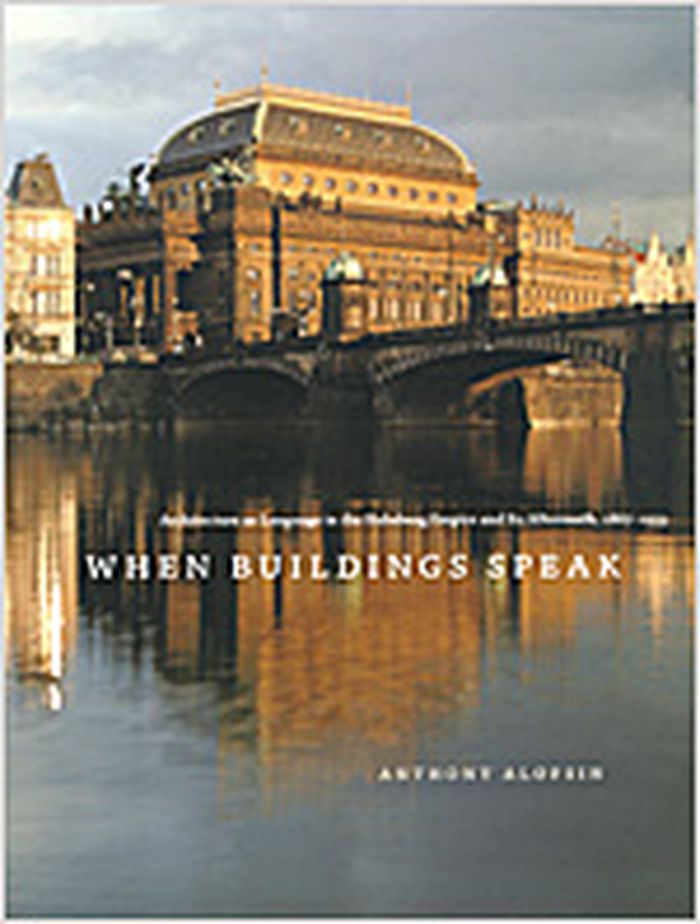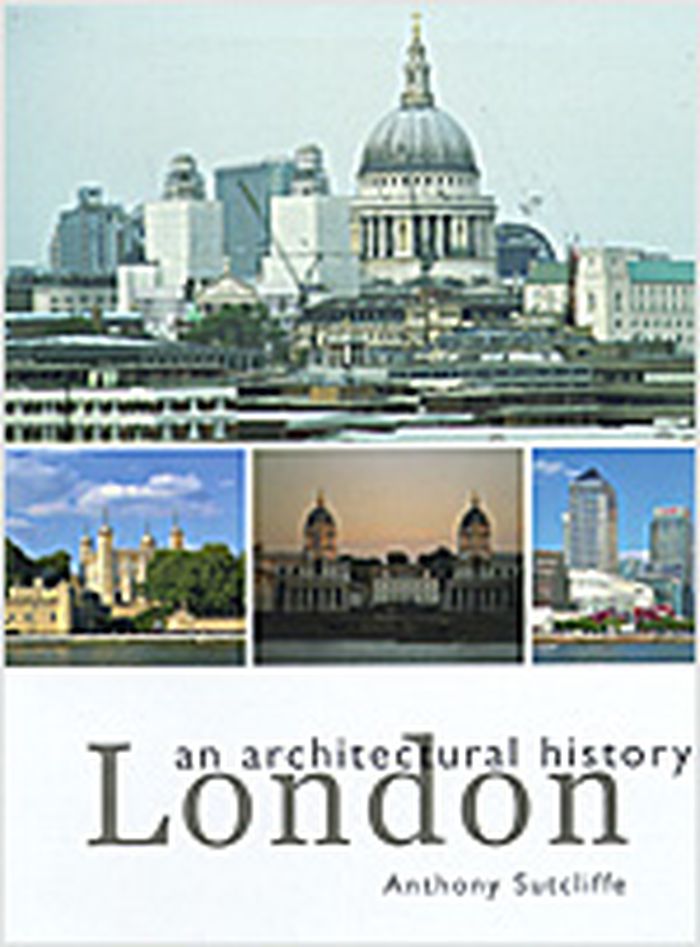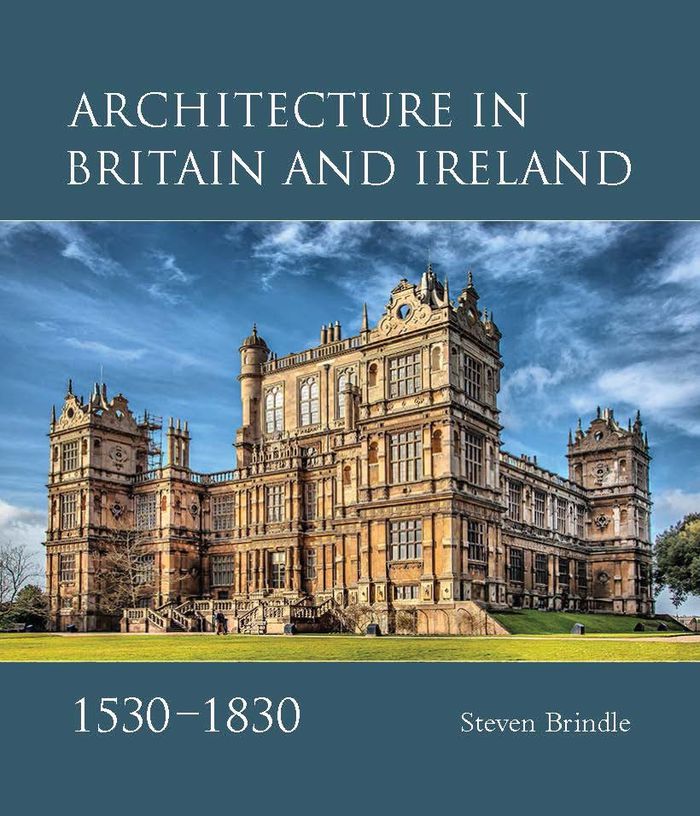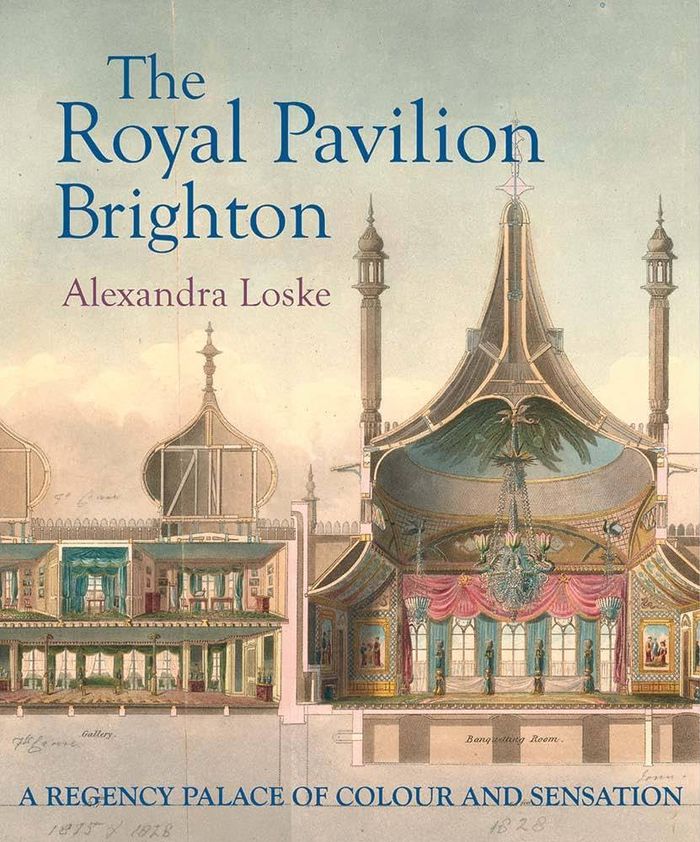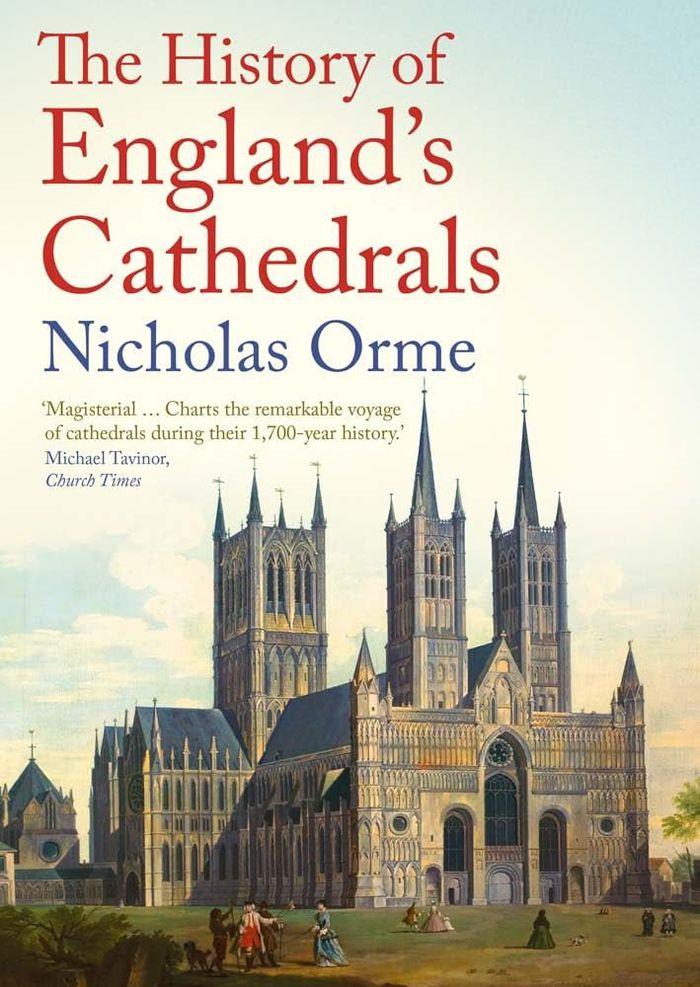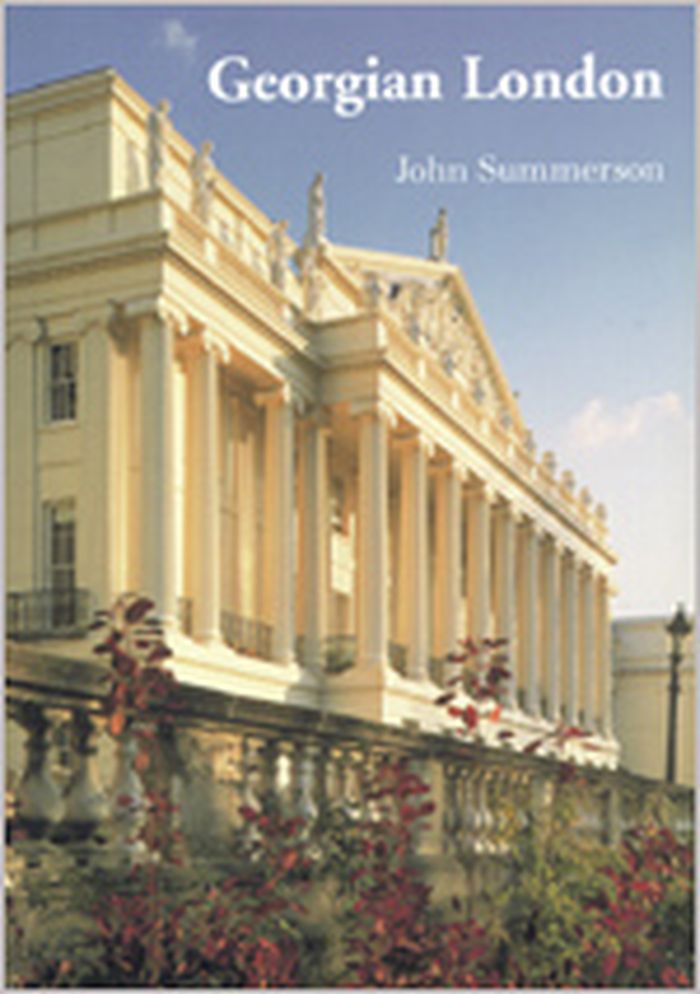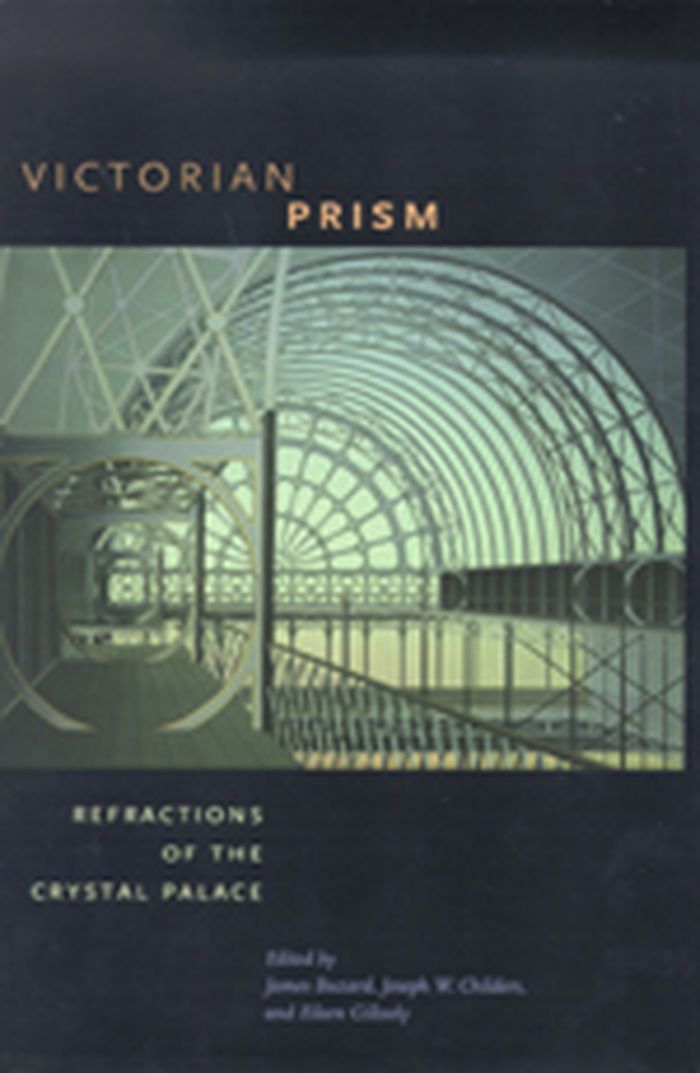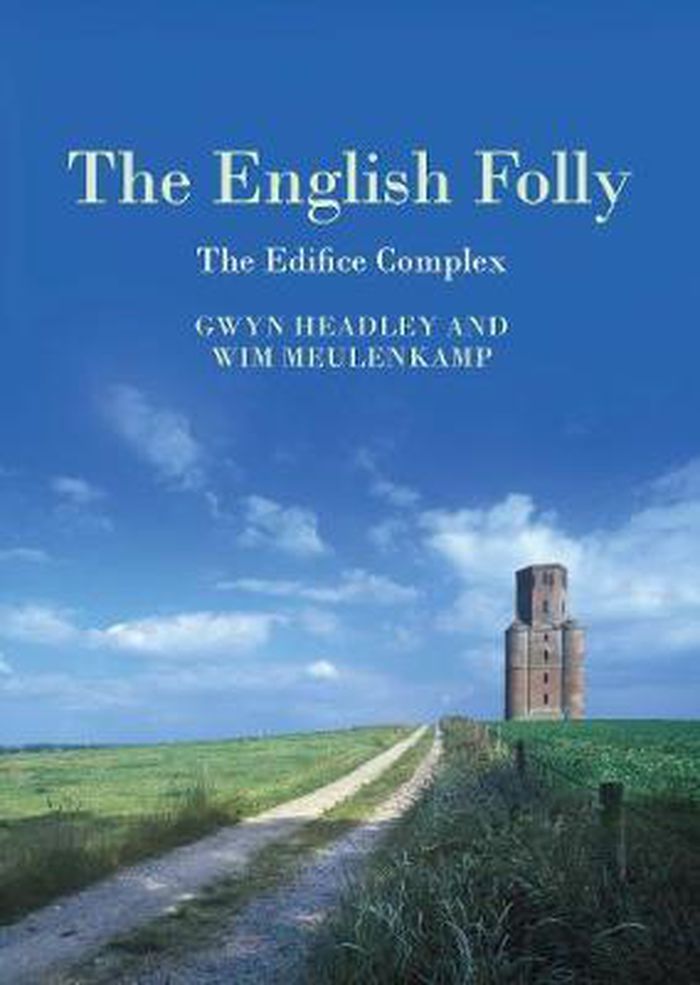$81.50
(available to order)
Summary:
Covering a wide range of buildings - from national theaters to crematoria, apartment buildings to warehouses, and sanatoria to postal savings banks - Anthony Alofsin proposes a new way of interpreting this language. He calls on viewers to read buildings in two ways: through their formal elements, on the one hand; and through their political, social, and cultural contexts,(...)
History until 1900, Great Britain
September 2006, Chacago / London
When buildings speak : architecture as language in the Habsburg empire and its aftermath, 1867 - 1933
Actions:
Price:
$81.50
(available to order)
Summary:
Covering a wide range of buildings - from national theaters to crematoria, apartment buildings to warehouses, and sanatoria to postal savings banks - Anthony Alofsin proposes a new way of interpreting this language. He calls on viewers to read buildings in two ways: through their formal elements, on the one hand; and through their political, social, and cultural contexts, on the other. By looking through Alofsin’s eyes, readers can see how myriad nations sought to express their autonomy by tapping into the limitless possibilities of art and architectural styles.
History until 1900, Great Britain
$74.95
(available to order)
Summary:
London is one of the world’s greatest cities, and its architecture is a unique heritage. The Tower of London is an urban castle unique in Europe, St Paul’s is one of the world’s greatest domed cathedrals, and the squares and crescents of the West End inspired Haussmann’s Paris. Private ownership has shaped the city, and architects have served a wide variety of(...)
History until 1900, Great Britain
April 2006, New Haven / London
London : an architectural history
Actions:
Price:
$74.95
(available to order)
Summary:
London is one of the world’s greatest cities, and its architecture is a unique heritage. The Tower of London is an urban castle unique in Europe, St Paul’s is one of the world’s greatest domed cathedrals, and the squares and crescents of the West End inspired Haussmann’s Paris. Private ownership has shaped the city, and architects have served a wide variety of clients. London’s Classical era produced an elegant townscape between 1600 and 1830, but medieval, Tudor, and Victorian London were a potpourri of buildings large and small, each making its own design statement. "In London : an architectural history", the author takes the reader through two thousand years of architecture from the sublime to the mundane.
History until 1900, Great Britain
$110.00
(available to order)
Summary:
''Architecture in Britain and Ireland, 1530–1830'' presents a comprehensive history of architecture in Britain during this three-hundred-year period. Drawing on the most important advances in architectural history in the last seventy years, ranging across cultural, material, political, and economic contexts, this book also encompasses architecture in Ireland and includes(...)
Architecture in Britain and Ireland, 1530-1830
Actions:
Price:
$110.00
(available to order)
Summary:
''Architecture in Britain and Ireland, 1530–1830'' presents a comprehensive history of architecture in Britain during this three-hundred-year period. Drawing on the most important advances in architectural history in the last seventy years, ranging across cultural, material, political, and economic contexts, this book also encompasses architecture in Ireland and includes substantial commentary on the buildings of Scotland and Wales.
History until 1900, Great Britain
$70.00
(available to order)
Summary:
Created between 1787 and 1823 by George IV, the ''Royal Pavilion in Brighton'' is perhaps the most daring and enchanting example of a building that expresses the European fascination with what in the early nineteenth century was considered the “Orient,” in particular China and India. The building, with its Indian-inspired exterior, was the work of the renowned architect(...)
The Royal Pavilion, Brighton: A Regency palace of colour and sensation
Actions:
Price:
$70.00
(available to order)
Summary:
Created between 1787 and 1823 by George IV, the ''Royal Pavilion in Brighton'' is perhaps the most daring and enchanting example of a building that expresses the European fascination with what in the early nineteenth century was considered the “Orient,” in particular China and India. The building, with its Indian-inspired exterior, was the work of the renowned architect John Nash, who with the contributions of several other gifted and inventive architects, artists, and designers, created a building that draws you in, takes you on a journey, and plays with your senses. Featuring new photography, this lavishly illustrated book will provide a fresh look at the sumptuous Chinoiserie interiors of the Royal Pavilion and their enduring appeal. Drawing on recent research, conservation projects, and the unprecedented loan exhibition A Prince’s Treasure: From Buckingham Palace to the Royal Pavilion (2019–22), this book celebrates the colours and sensual beauty of these interiors while situating the Royal Pavilion in the context of the time of its creation and development under royal ownership, from its beginning in the wake of the French Revolution, through its transformation and extension during and just after the Napoleonic Wars, to its fate and legacy in the early Victorian era.
History until 1900, Great Britain
books
$119.95
(available to order)
Summary:
This book examines the public architecture of Ireland from 1680 to 1760, a crucial period during which the country undertook the combined tasks of recovering from war and constructing a new and stable society. New buildings, and new types of buildings, were needed to express and sustain this society. Architectural historian Edward McParland explores the role of public(...)
History until 1900, Great Britain
December 2001, New Haven
Public Architecture in Ireland 1680-1760
Actions:
Price:
$119.95
(available to order)
Summary:
This book examines the public architecture of Ireland from 1680 to 1760, a crucial period during which the country undertook the combined tasks of recovering from war and constructing a new and stable society. New buildings, and new types of buildings, were needed to express and sustain this society. Architectural historian Edward McParland explores the role of public architecture in this enterprise, focusing on public buildings as works of architecture and art, while also discussing the political, social, and economic contexts in which they were built. The book opens with a discussion of the people who were involved in the creation of public architecture and a description of the physical appearance of Ireland at the time, including its roads and harbors, its market houses and churches. The author then presents detailed portraits of key public buildings, among them The Royal Hospital Kilmainham, The Royal Barracks, Dublin Castle, Trinity College Dublin, and Edward Lovett Pearce’s Parliament House. Drawing on extensive research in archives throughout Britain and Ireland, McParland documents the architectural and social importance of these remarkable public buildings.
books
December 2001, New Haven
History until 1900, Great Britain
$42.00
(available to order)
Summary:
England’s sixty-two Anglican and Catholic cathedrals are some of our most iconic buildings, attracting millions of worshippers and visitors every year. Though much has been written about their architecture, there is no complete history of their life and activities. This is the first such book to provide one, stretching from Roman times to the present day. "The History(...)
The history of England's cathedrals
Actions:
Price:
$42.00
(available to order)
Summary:
England’s sixty-two Anglican and Catholic cathedrals are some of our most iconic buildings, attracting millions of worshippers and visitors every year. Though much has been written about their architecture, there is no complete history of their life and activities. This is the first such book to provide one, stretching from Roman times to the present day. "The History of England’s Cathedrals" explains where and why they were founded, who staffed them, and how their structures evolved. It describes their worship and how this changed over the centuries, their schools and libraries, and their links with the outside world. The history of these astonishing buildings is the history of England. Reading this book will bring you face to face with the Anglo-Saxons, Vikings, Normans, Reformation, Civil War, Victorian England, World War Two, and finally modern democracy.
History until 1900, Great Britain
Georgian London
$19.00
(available to order)
Summary:
First published 1945. In this classic of English architectural history, John Summerson provides a perceptive and highly readable account of a major building period in the history of London. Encompassing the architecture of the capital from the Great Fire of 1666 through the city’s early nineteenth-century expansion, the book remains a guide to the genesis and development(...)
History until 1900, Great Britain
June 2003, New Haven / London
Georgian London
Actions:
Price:
$19.00
(available to order)
Summary:
First published 1945. In this classic of English architectural history, John Summerson provides a perceptive and highly readable account of a major building period in the history of London. Encompassing the architecture of the capital from the Great Fire of 1666 through the city’s early nineteenth-century expansion, the book remains a guide to the genesis and development of Georgian London. Summerson examines the way in which building was conditioned by social, economic, and financial circumstances and discusses some of Britain’s most important buildings and their architects. While Summerson’s text is essentially unchanged in this edition, it has been corrected in the light of new research, expanded to include a few significant buildings that were originally overlooked, and enhanced with new illustrations. The Appendix of surviving Georgian buildings has also been carefully updated.
History until 1900, Great Britain
$66.50
(available to order)
Summary:
From the moment it opened on the first of May in the Crystal Palace in Hyde Park, London, the Great Exhibition of 1851 was one of the defining events of the Victorian period. It stood not only as a visible symbol of British industrial and technological progress but as a figure for modernity—a figure that has often been thought to convey one coherent message and vision of(...)
History until 1900, Great Britain
July 2007, Charlottesville - London
Victorian prism : refractions of the crystal palace
Actions:
Price:
$66.50
(available to order)
Summary:
From the moment it opened on the first of May in the Crystal Palace in Hyde Park, London, the Great Exhibition of 1851 was one of the defining events of the Victorian period. It stood not only as a visible symbol of British industrial and technological progress but as a figure for modernity—a figure that has often been thought to convey one coherent message and vision of culture and society. This volume examines the place occupied both materially and discursively by the Crystal Palace and other nineteenth- and twentieth-century exhibitions in the struggle to understand what it means to be modern. Initiated in part by a number of conferences held in 2001 to commemorate the 150th anniversary of the Crystal Palace, Victorian Prism provides new perspectives to historians, literary critics, art historians, and others interested in how a large glass building in a London park could refract meaning from Caracas to Calcutta. In its investigations of the ways of knowing and shaping the world that emerged during the planning and execution of this first "world's fair," Victorian Prism not only restores the multiplicity of experiences and other determining factors to our picture of the Great Exhibition; it makes reevaluation of the exhibition and its legacies the occasion for reevaluating modernity itself in its broadest sense—as the cultures, potentialities, and liabilities of the Enlightenment. With essays by a number of leading scholars in their fields, the collection as a whole focuses on how these exhibitions, in attempting to define the cultures of their day, incorporated a range of conflicting ideologies and agendas. In doing so, it offers a richer, more complex understanding of the experience of modernity than we have previously acknowledged. The volume also addresses the ways in which the cultural processes and tendencies brought together in these exhibitions have been refracted down to the present, thus informing and complicating our own relationship to both modernity and postmodernity.
History until 1900, Great Britain
$60.50
(available to order)
Summary:
If this were a novel, the tales of astounding wealth, sexual perversion, murder, munificence, rape, insanity, brutality, slavery, religious mania, selfishness, snobbery, charity, suicide, generosity, theft, madness, wickedness, failure and eccentricity which unfold in these pages would be too concentrated to allow for the willing suspension of disbelief. All these sins(...)
History until 1900, Great Britain
October 2020
The English folly: the edifice complex
Actions:
Price:
$60.50
(available to order)
Summary:
If this were a novel, the tales of astounding wealth, sexual perversion, murder, munificence, rape, insanity, brutality, slavery, religious mania, selfishness, snobbery, charity, suicide, generosity, theft, madness, wickedness, failure and eccentricity which unfold in these pages would be too concentrated to allow for the willing suspension of disbelief. All these sins and virtues, and more, are displayed by the characters in this book, some exhibiting several of them simultaneously. Folly builders were not as we are. They never built what we now call follies. They built for beauty, utility, improvement; it is only we, struggling after them with our imperfect understanding, who dismiss their prodigious constructions as follies. Follies can be found around the world, but England is their spiritual home. Having written the definitive books on follies in Great Britain, Benelux and the USA, Headley & Meulenkamp have turned their attention to the folly builders themselves, people so blinded by fashion or driven by some nameless ideology that they expended great fortunes on making their point in brick, stone and flint. Most follies are simply misunderstood buildings, and this book studies the motives, characters, decisions and delusions of their builders. If there was madness in their building, fortunately there was no method in it.
History until 1900, Great Britain
books
$74.95
(available to order)
Summary:
Many provincial towns in Britain grew dramatically in size and importance in the eighteenth century. Ports such as Glasgow and Liverpool greatly expanded, while industrial centers such as Birmingham and Manchester flourished. Market towns outside London developed as commercial centers or as specialty destinations: visitors could find spa treatments in Bath, horse racing(...)
Town: prints and drawings of Britain before 1800
Actions:
Price:
$74.95
(available to order)
Summary:
Many provincial towns in Britain grew dramatically in size and importance in the eighteenth century. Ports such as Glasgow and Liverpool greatly expanded, while industrial centers such as Birmingham and Manchester flourished. Market towns outside London developed as commercial centers or as specialty destinations: visitors could find spa treatments in Bath, horse racing in Newmarket, and naval services in Portsmouth. Containing more than one hundred images of country towns in England, Wales, and Scotland, this book draws on the extensive Gough collection in the Bodleian Library. Contemporary prints and drawings provide a powerful visual record of the development of the town in this period, and finely drawn prospects and maps—made with greater accuracy than ever before—reveal their early development. This book also includes perceptive observations from the journals and letters of collector Richard Gough (1735–1809), who traveled throughout the country on the cusp of the industrial age.
books
February 2021
History until 1900, Great Britain
